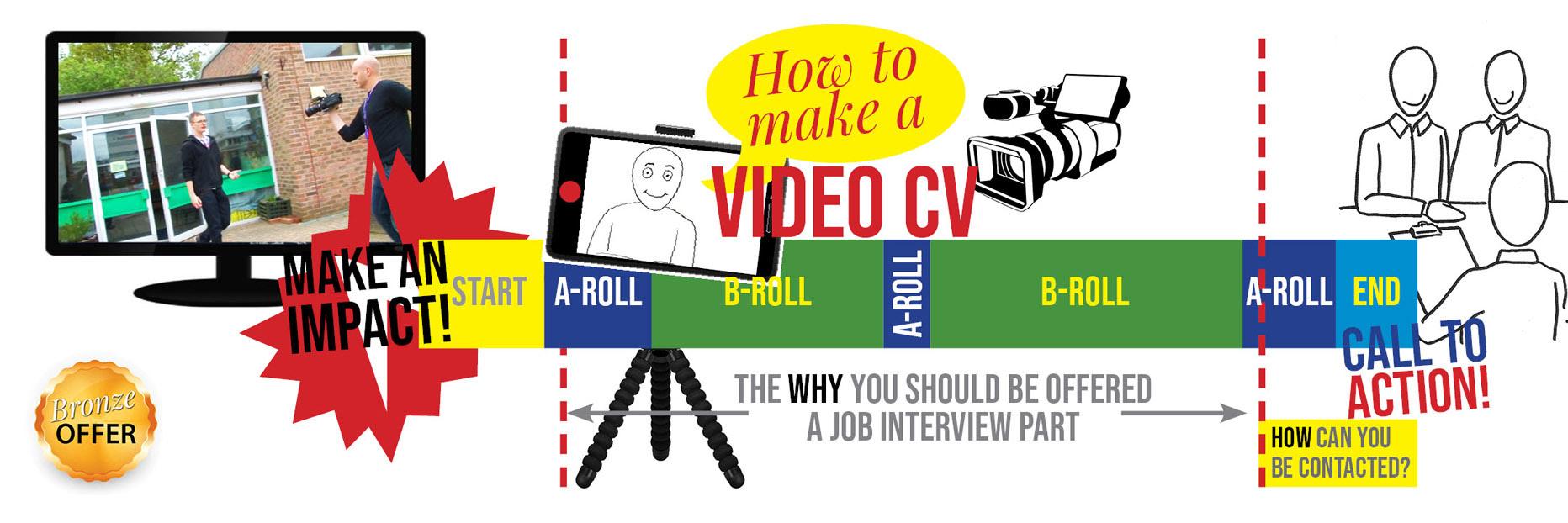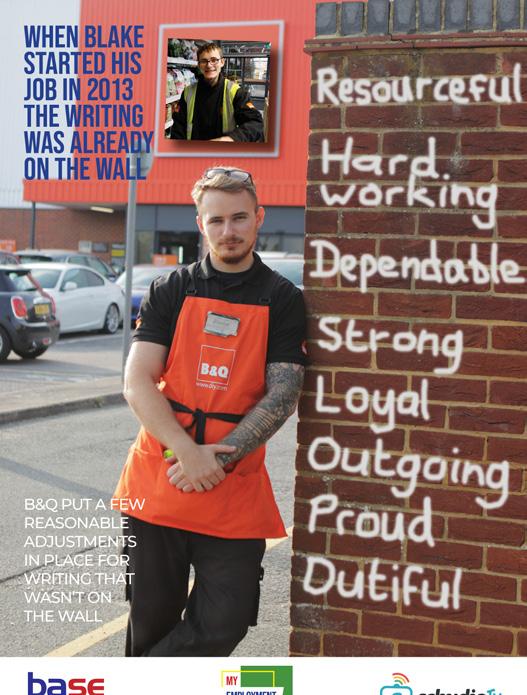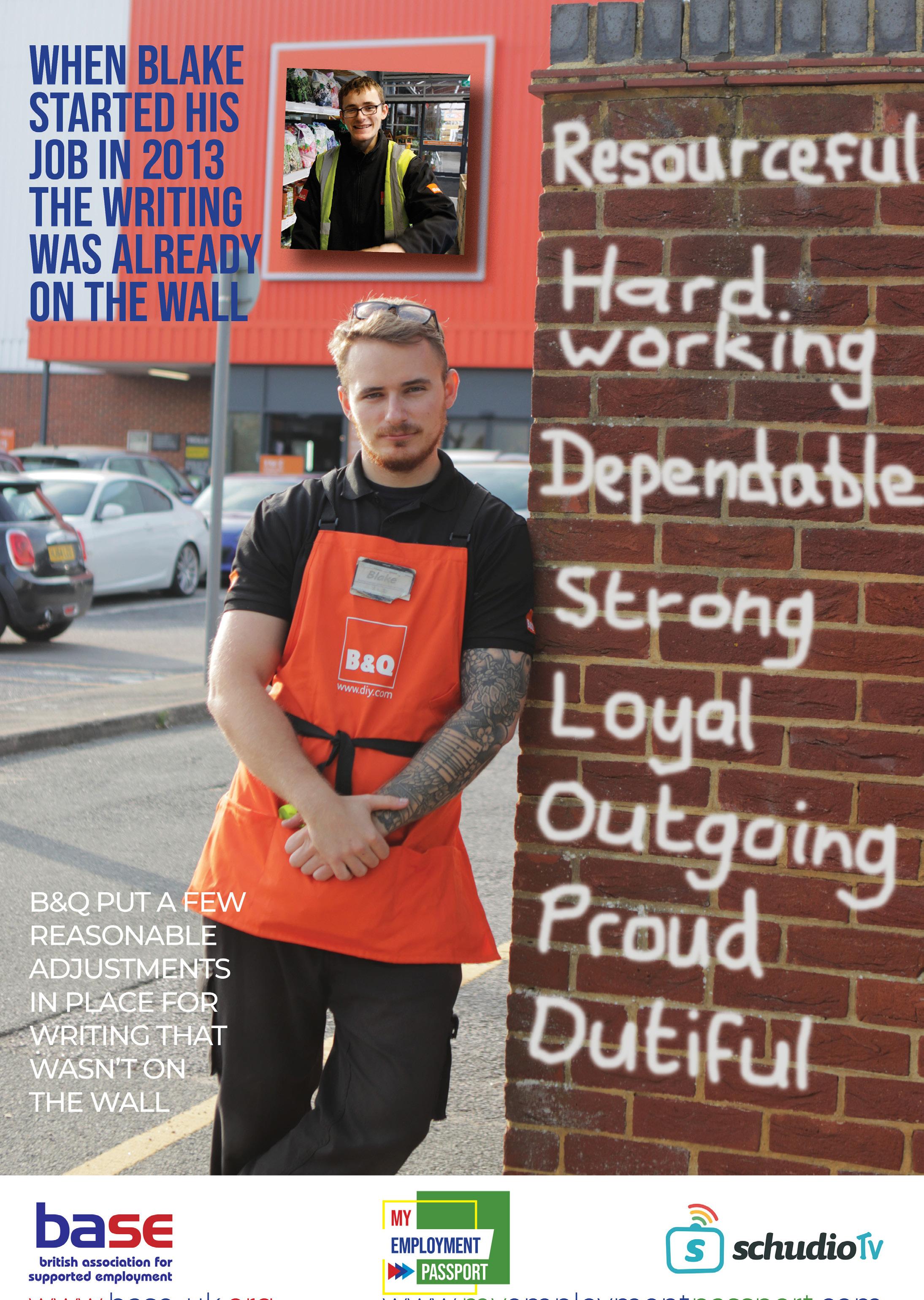

bronze offer


Aligned with the Gatsby Benchmarks and the CDI learning outcomes.
My Employment Passport has been created by Richard Lamplough based on his 30 years’ experience supporting young people with additional needs into paid work. Over the years, Richard’s work has been funded by a number of different organisations including local authorities, the DWP and the Careers and Enterprise Company.
The Bronze Offer is perfect for young people who want to show their creativity and end up with an extremely useful Video CV that could get them a job interview. It’s also ideal for organisations who want to try out the My Employment Passport approach for free before, perhaps, progressing with the investment the Silver, Gold or Diamond offers require.

and other hidden disabilities.
Group B: those young people from entry level up to level 1 who (probably) would find video-editing software too challenging to use. Most of these young people would be at special schools, and specialist provisions. Group A uses, what the course calls, dark blue worksheets and Group B uses, what the course calls, light blue worksheets
How much does it cost? It costs nothing; this course is completely free.
What’s the background to this?
In 2013, Richard Lamplough worked with a small group of young people in year 14 at Crawley College, West Sussex. The group decided that they wanted Richard to show them how he would go about making a Video CV, and one of the group, an autistic young man called Blake Edwards, volunteered to be the star. The finished Video CV resulted in Blake getting a job at B&Q, a job he still has today. Over the last ten years, Blake has accompanied Richard on a few of his school visits, acting as a role model to other autistic people.

How does the programme work in practice?
Once you have expressed an interest in running the programme by emailing Richard using richard@myemploymentpassport.com, you will be sent a Facilitators’ Tutorial video. This 30-minute video is essential watching because it makes everything clear for you. As well as being sent this, you will be supplied with:
Ten session plans.
Ten Activity Sheets for your young people who fall within Group A.
Ten Activity Sheets for your young people who fall within Group B.
Ten Summary and Suggestion Sheets for your young people who fall within Group A.
Ten Summary and Suggestion Sheets for your young people who fall within Group B.
Ten video links.
Perhaps the most important thing for you to think about before you start the course is the make-up of your group. When Richard ran his course in 2013, there were only two or three young people who fell into the Group A category, including Blake. The rest, five or six young people, were in the Group B category. Whilst a few of them had very engaging characters, and a Video CV would have been a good way forward for them, they simply didn’t have the skills to be able to do the essential video-editing work. That meant Richard would have had to take on these duties himself, or hope that there was somebody else who would. This issue, and possible solutions, is covered in the Facilitators’ Tutorial video.
What’s also important to point out is that this course only gives you part one of a four-part process. Here’s a summary of the four parts.
1. How to structure and record a Video CV.
2. How to use editing software to complete the Video CV.
3. How to promote it to local employers.
4. Finding the best approach, once you get an expression of interest from a local employer.
Number 3 is very large indeed and it’s possible there will be resources on the internet to help you; not talking specifically about marketing a Video CV to employers, but advising a young person on having a strategy for employer engagement. The skills that some of your young people might have already will be ideal preparation for them. The concept of being social media savvy plays a huge part.
What is certainly true is that Video CVs are more likely to be welcomed in the private sector than they are in the public sector. Almost certainly, there won’t be any local authorities or health trusts that would recognise accepting Video CVs as a recruitment method. As for the private sector, whilst Richard got lucky with B&Q in 2013, it’s hard to imagine any of the large retail organisations being quite so accommodating these days. The biggest potential audience for Video CVs is, without doubt, Small and Medium Enterprises within the private sector. Clearly, if these SMEs are in the creative sector, almost certainly they’ll accept Video CVs. After all, what video production company wouldn’t accept a Video CV?
Finally, as pointed out in the session plans and the Facilitators’ Tutorial video, you may find that not all of your young people end up with completed Video CVs. However, if they have taken part in recording some of their achievements, this is a very worthwhile outcome.
A young person who has, on their smartphone, laptop or tablet, a minute’s worth of footage of them doing something practical, applying focus, commitment and determination is a very useful thing to have and is something that could, perhaps, be played at a job interview, even if it never became a completed Video CV.

